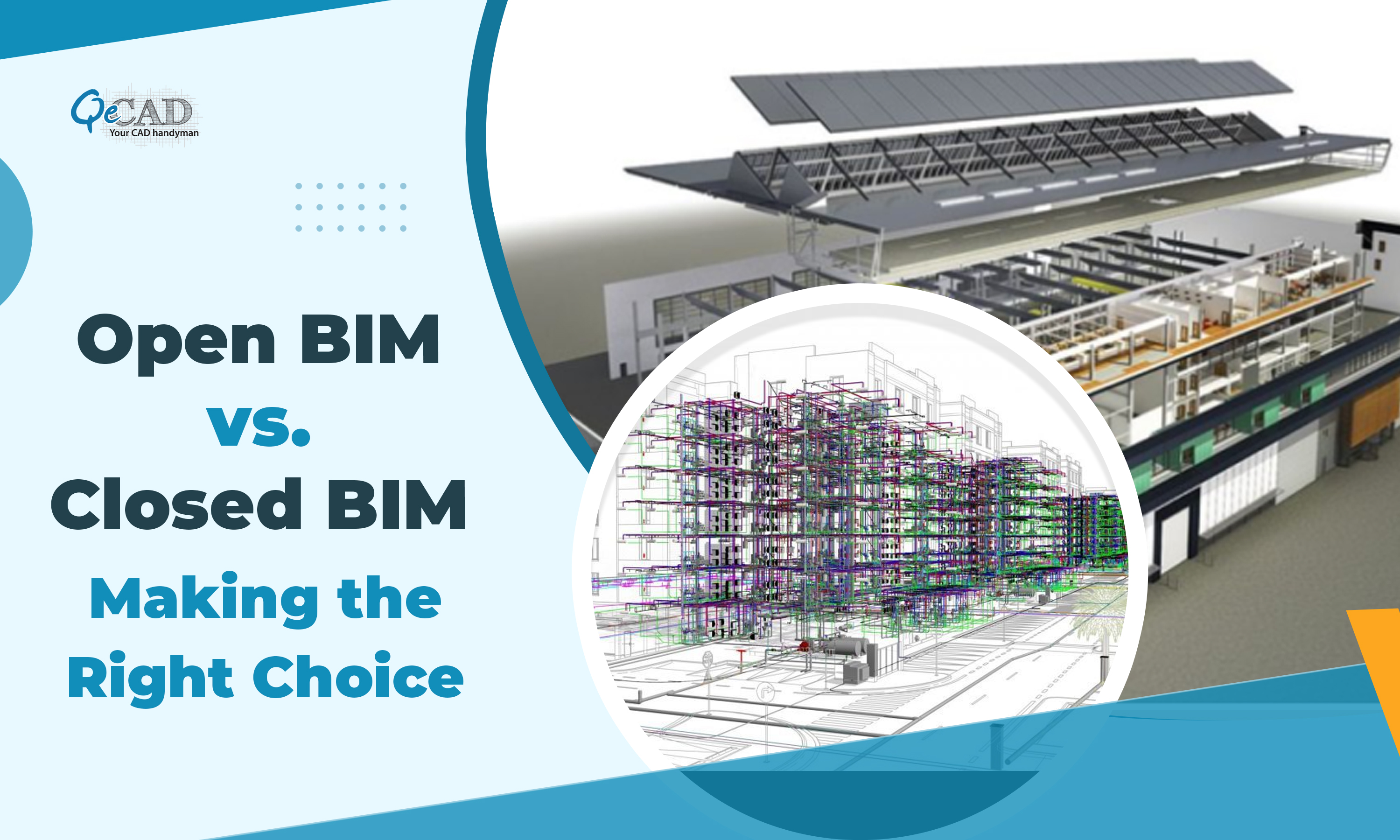
BIM has emerged as a revolutionary influence within the continually evolving domains of construction and architectural design. BIM allows stakeholders to create comprehensive digital representations of building projects, revolutionizing how we plan, design, and construct structures. However, within the sphere of BIM, there’s a crucial choice: Open BIM or Closed BIM?
This choice can have a substantial effect on the success and efficiency of your BIM Modelling Services.
Are you looking to foster collaboration among diverse teams, optimize interoperability, and embrace flexibility? Or do you prioritize a closed, controlled environment with proprietary tools?
In this infographic, we will indulge in the nuances of Open BIM vs. Closed BIM, shedding light on their distinctive attributes.
Whether you’re a seasoned BIM professional or just venturing into this dynamic field, understanding the intricacies of these two approaches is vital for making informed decisions that can elevate your BIM Modeling Services to new heights. Join us as we dissect the differences, advantages, and considerations of Open BIM and Closed BIM to help you confidently navigate the complex world of BIM modeling.
Open BIM
Open BIM is characterized by its emphasis on collaboration, interoperability, flexibility, and cost-efficiency. It encourages integrating various stakeholders and vendors to collaborate seamlessly.
Closed BIM
Closed BIM, on the other hand, follows a more isolated and rigid approach, limiting collaboration and interoperability. It often involves using proprietary software and formats within a single organization or discipline.

Choosing the Right Approach
The choice between Open BIM and Closed BIM depends on your project’s specific needs and goals. While Open BIM promotes collaboration and flexibility, Closed BIM may be suitable for organizations prioritizing control and security within a closed system. It’s necessary to evaluate your project’s prerequisites and the level of collaboration expected to make an informed decision.
Both Open BIM and Closed BIM hold their strengths and limitations. Evaluating and understanding their differences is beneficial to make an apt choice that is in sync with your project’s objectives. Ultimately, the success of a BIM project relies on selecting the approach that best suits your specific circumstances.
Remember that the construction industry continues to evolve, and new developments in BIM technology may bridge the gap between Open and Closed BIM approaches in the future. Stay updated and be flexible in response to evolving landscapes to guarantee the success of your construction projects.
